
Introductory Rock Stories Lab
Earth Science Extras
by Russ Colson

Porphyritic Igneous Rock. An igneous rock is a rock that was once molten and then froze. A porphyritic igneous rock characteristically contains both small crystals (typically too small to see as in this example), and larger crystals (that are typically orders of magnitude larger than the small ones). It tells the story of an initial period of slow cooling at depth in the Earth's crust, when the larger crystals grew, followed by rapid cooling after the remaining melt with the larger crystals erupted to the surface and froze around the already-grown larger crystals.
We have studied the different kinds of rocks and the stories they tell us of earth processes and what has happened in Earth's past. However, it's often fun to read the stories in rocks yourself, that way you don't have to depend only on the trail guides and signage when you hike in a national park or visit a museum. We are going to practice telling stories for a few rocks where the stories are quite distinct and easy to read.
Not all rocks are easy to read! Once upon a time long ago when I was a graduate student, I was hiking with a group of geology professors and graduate students in the Catalina Mountains of Arizona. We had been looking at rocks that we had already studied ahead of time so that we would know what we were seeing. However, on this particular hike, we hadn't read up on the kinds of rocks we should expect, so we played a game of trying to tell their stories. It was really hard! We weren't even sure if we were looking at Igneous, metamorphic, or sedimentary rocks! We later learned that some of the rocks were metamorphosed volcanic breccia (a rock formed when a violent volcanic eruption deposits particles from a moving stream of volcanic ash which then later becomes metamorphosed), which meant that the rocks had metamorphic, sedimentary, and igneous characteristics at the same time! No wonder we weren't sure what we were seeing! The moral to this story is, don't be discouraged if you can't tell the stories of all the rocks that you find out in the 'wild.' It isn't always easy to read the story for any particular rock you happen to see or pick up. However, some rocks are very distinct with easy-to-read stories, and you can learn to tell the stories of these distinct rocks. The exercises below can give you experience recognizing those distinct rocks and the stories they tell.
We will only look at only a few of the most common rock types: granite, basalt, gabbro, shale, sandstone, limestone, gypsum, slate, and gneiss.
Key features might include vesiculation (bubbles formed when gases escape a lava), aphanitic texture (igneous rock, made of tiny crystals too small to see), phaneritic texture (igneous rock made of crystals big enough to see), detrital particles too small to see (characteristic of sedimentary rocks with silt and clay-sized particles), detrital particles big enough to see but less than 2mm (characteristic of sedimentary rocks with sand-sized particles), detrital particles larger than 2mm (characteristic of sedimentary rocks with pebbles-sized particles), crystalline texture (typically igneous rock with somewhat equal sized grains grown together from a melt, but can sometimes be sedimentary with crystals grown together by crystallizing from water), fissility (sedimentary in which rock breaks in flattish pieces), slaty cleavage (metamorphic, foliation texture in which rock breaks along flat planes, more distinct than fissility), banding (metamorphic foliation texture in which light and dark minerals are segregated into layers), lamination (sedimentary texture in which sediment particles of different size or character define small layers in the rock). These features are the evidence for a variety of stories, as explored in previous lessons.
Here are some example pictures of the kinds of rocks we will look at. Many more pictures are available online.
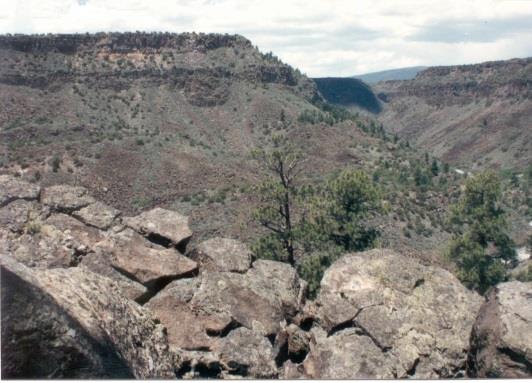
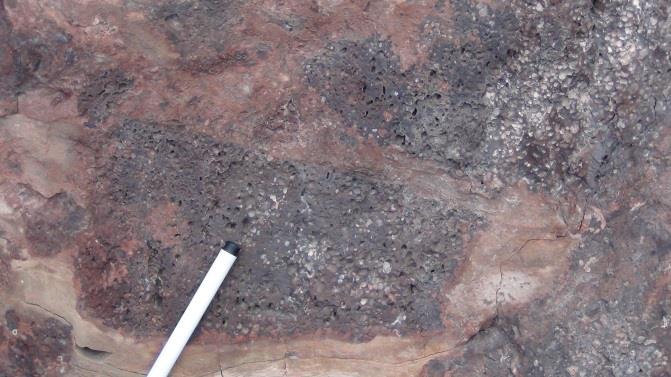
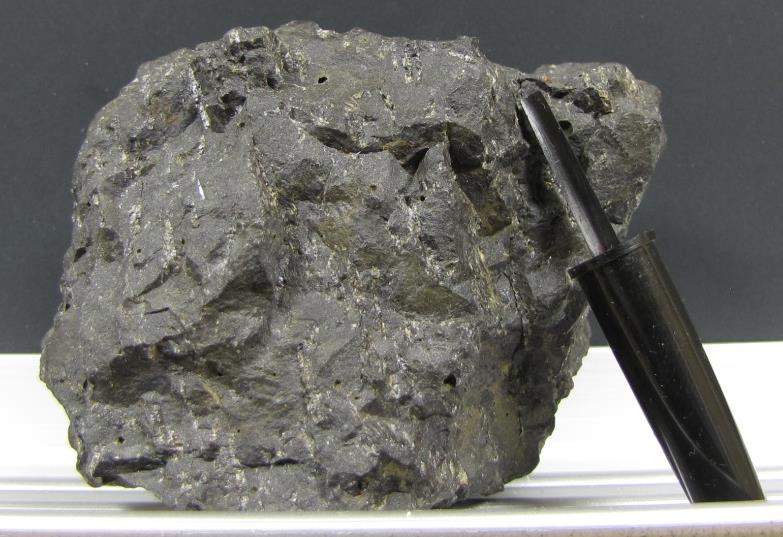
Note: The basalt above is very slightly vesicular, and, in addition to the generally aphanitic texture, has a few large plagioclase crystals, making it porphyritic.
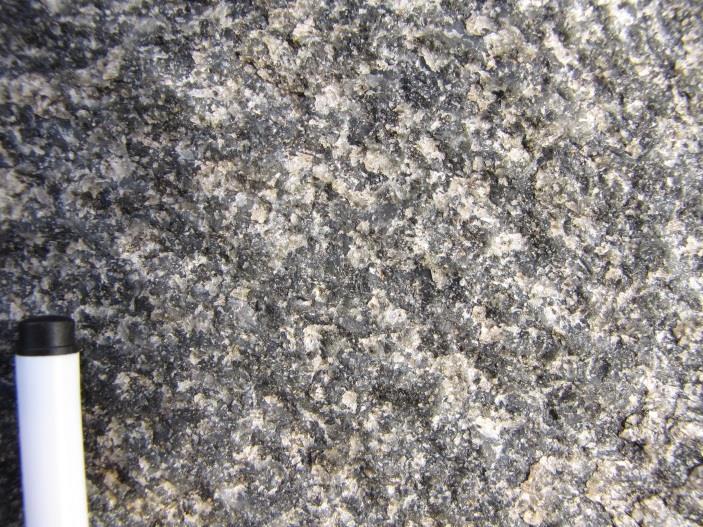
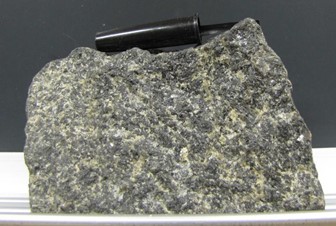
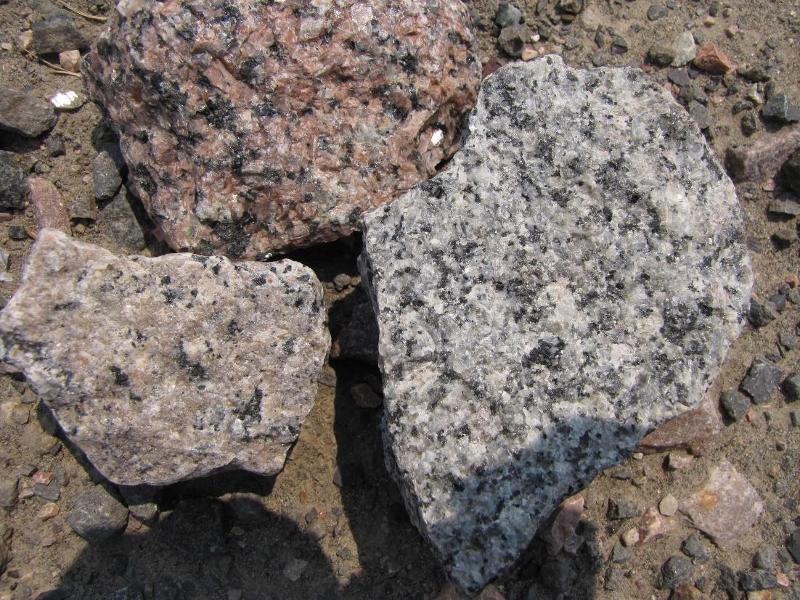
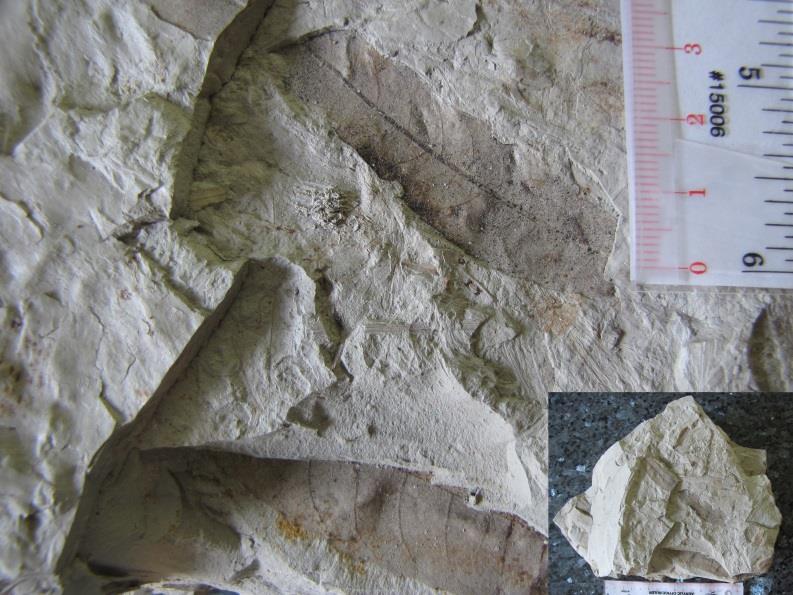
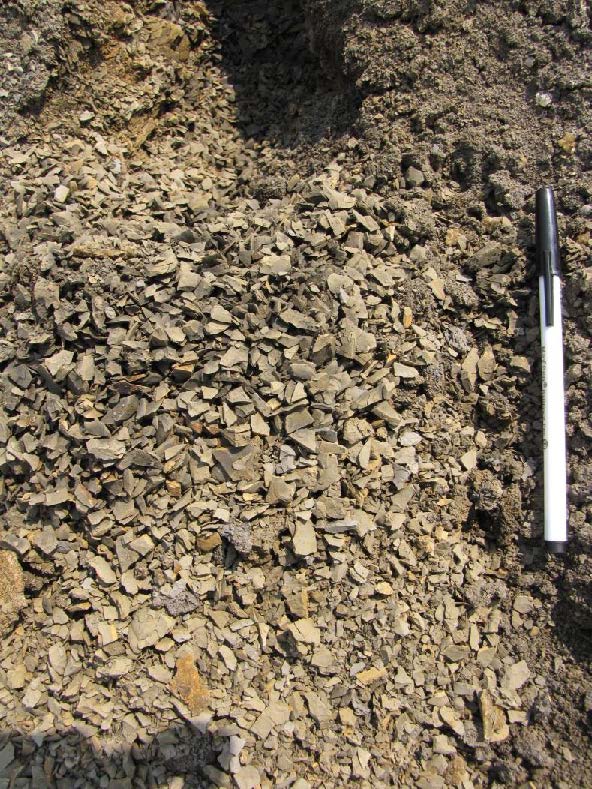
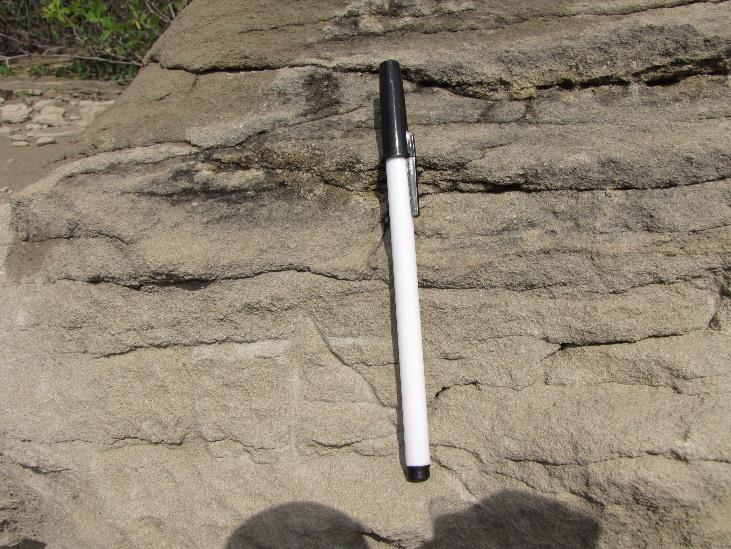


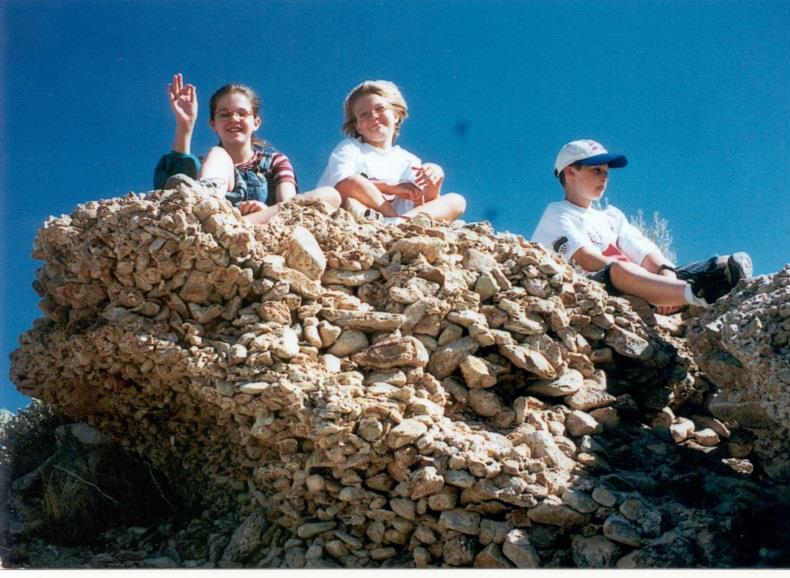
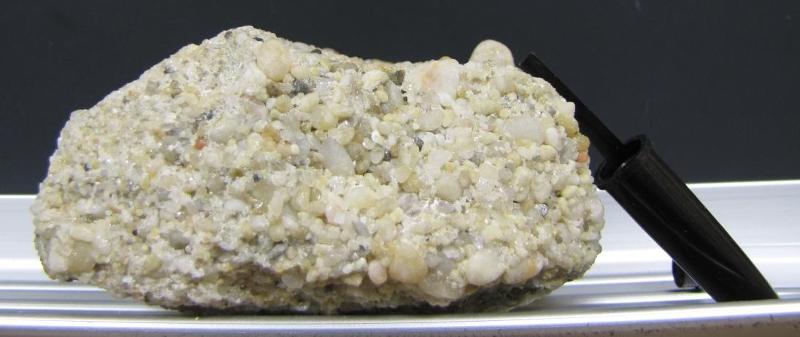
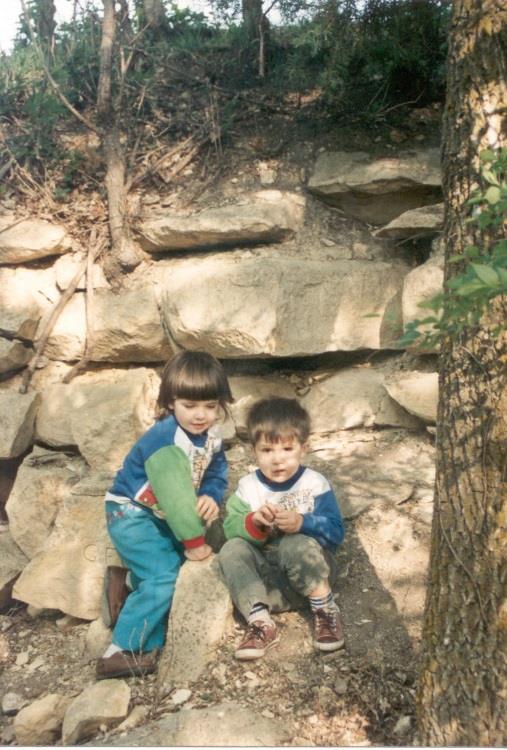
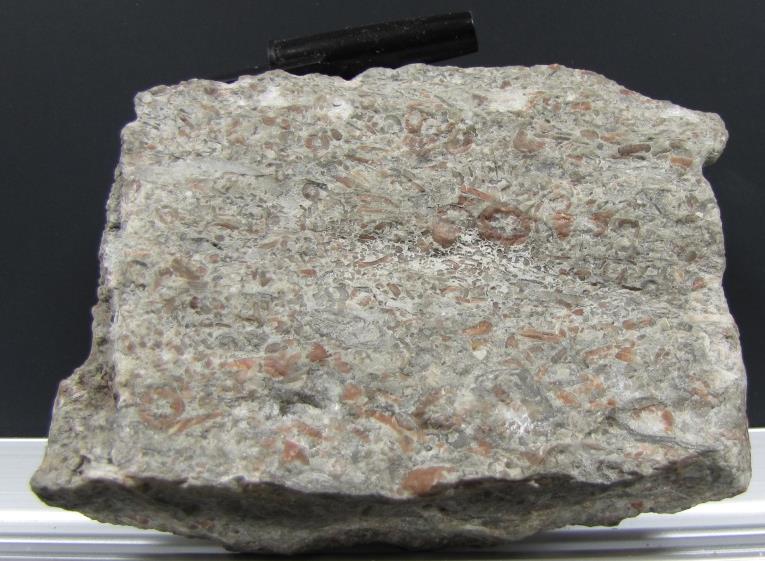
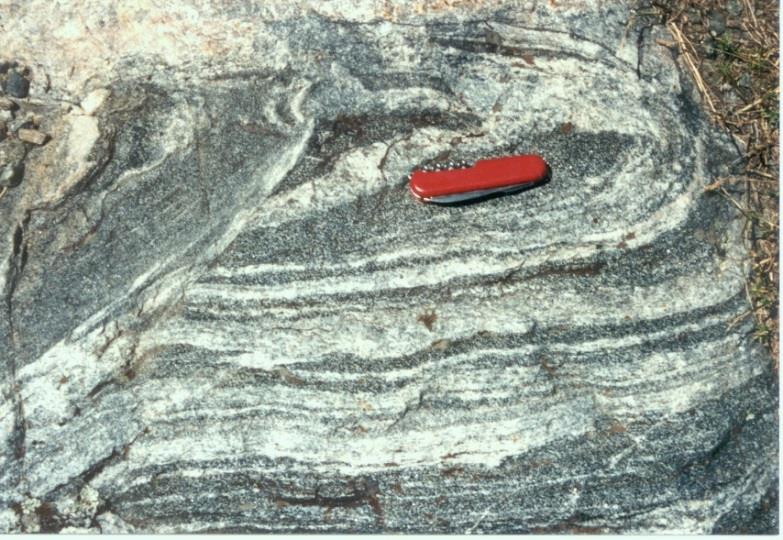
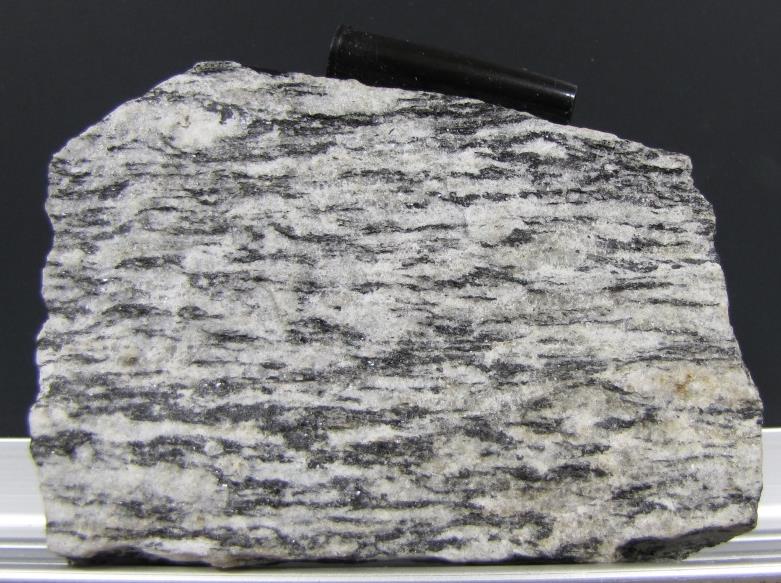
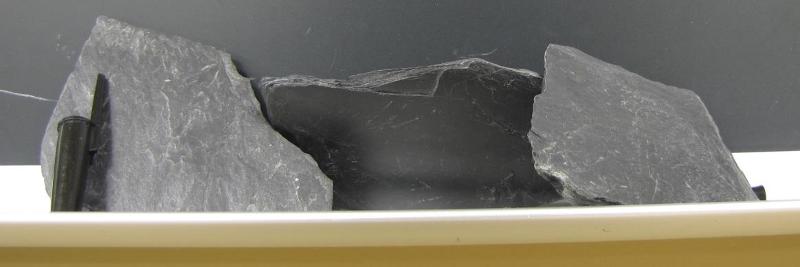

For each of the rocks shown in the challenges below, identify 3 things: the key feature of that rock that tells its story, the story, and the name of the rock
last updated 1/7/2023. Text and pictures are the property of Russ Colson.